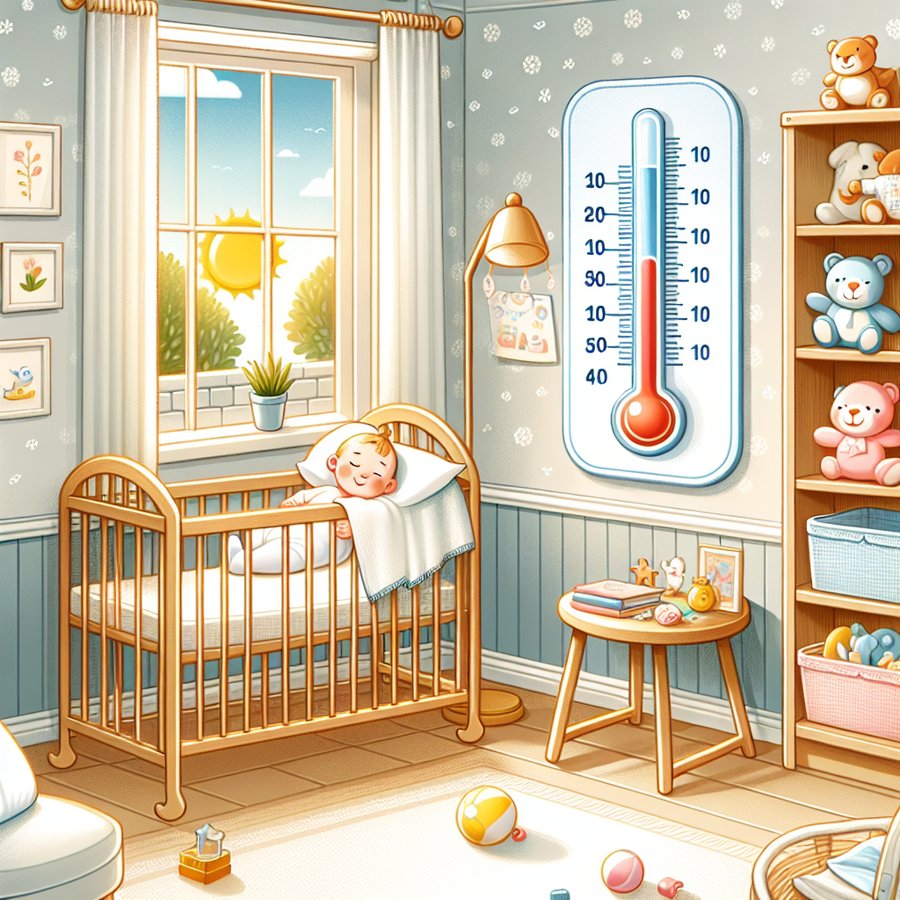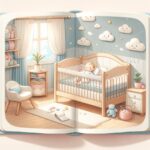Understanding the temperature guidelines for baby’s sleep environment is crucial for new parents aiming to provide a safe and comfortable resting space for their little ones. It’s not just about wrapping them snugly or choosing the right pajamas; the room’s temperature plays a significant role in how well your baby sleeps through the night.
The Importance of Proper Temperature in Your Baby’s Sleep Environment
Maintaining the right temperature in your baby’s sleep environment is essential for several reasons. First, it helps to reduce the risk of Sudden Infant Death Syndrome (SIDS), as overheating has been identified as a contributing factor. Secondly, a comfortable temperature ensures that your baby can sleep deeply and wake up feeling rested, which is vital for their development and your peace of mind.
Experts recommend keeping the nursery between 68 and 72 degrees Fahrenheit (20 to 22 degrees Celsius). This range is considered optimal for most infants, providing a cozy yet not too warm atmosphere. For more detailed information on creating a safe sleep environment for your baby, consider reading Reducing the Risk of SIDS in Newborn Sleep Arrangements.
Temperature Guidelines for Baby’s Sleep Environment
Following the recommended temperature guidelines for baby’s sleep environment is straightforward but requires attention to detail. Using a room thermometer can help you monitor the nursery’s temperature accurately. Additionally, it’s crucial to consider factors such as seasonal changes and illness, which might require adjustments to ensure your baby’s comfort and safety.
Dressing your baby appropriately for the room temperature is another key aspect. A good rule of thumb is to dress them in one more layer than you would wear comfortably. However, avoid overbundling, as overheating can be dangerous. For insights into selecting the right sleepwear for different seasons, check out Selecting the Best Sleeping Bags for Different Seasons.
Additional Tips for Creating the Ideal Sleep Environment
Beyond temperature, several other factors contribute to an ideal sleep environment for your baby. Using white noise machines or soft lullabies can help soothe your baby to sleep and mask disruptive outside noises. Moreover, ensuring the room is dark enough and free from stimulating colors or lights can further promote a restful night’s sleep.
Regularly assessing your baby’s comfort during the night is also advisable. If they seem too hot or cold, adjust their clothing or the room’s temperature accordingly. For families interested in learning more about optimizing the nursery for sound sleep, Optimizing the Nursery for Sound Sleep provides valuable tips and advice.
In conclusion, keeping the nursery within the recommended temperature guidelines for baby’s sleep environment is key to ensuring your baby sleeps safely and soundly. By combining these tips with a consistent bedtime routine and other safety measures, you can create the perfect conditions for your little one’s restful nights, paving the way for healthy development and happy mornings.
For parents seeking further information on sleep-related topics, exploring resources such as How to Establish a Sleep Schedule for a Newborn or Techniques for Soothing a Baby to Sleep Through the Night can offer additional guidance and support.













